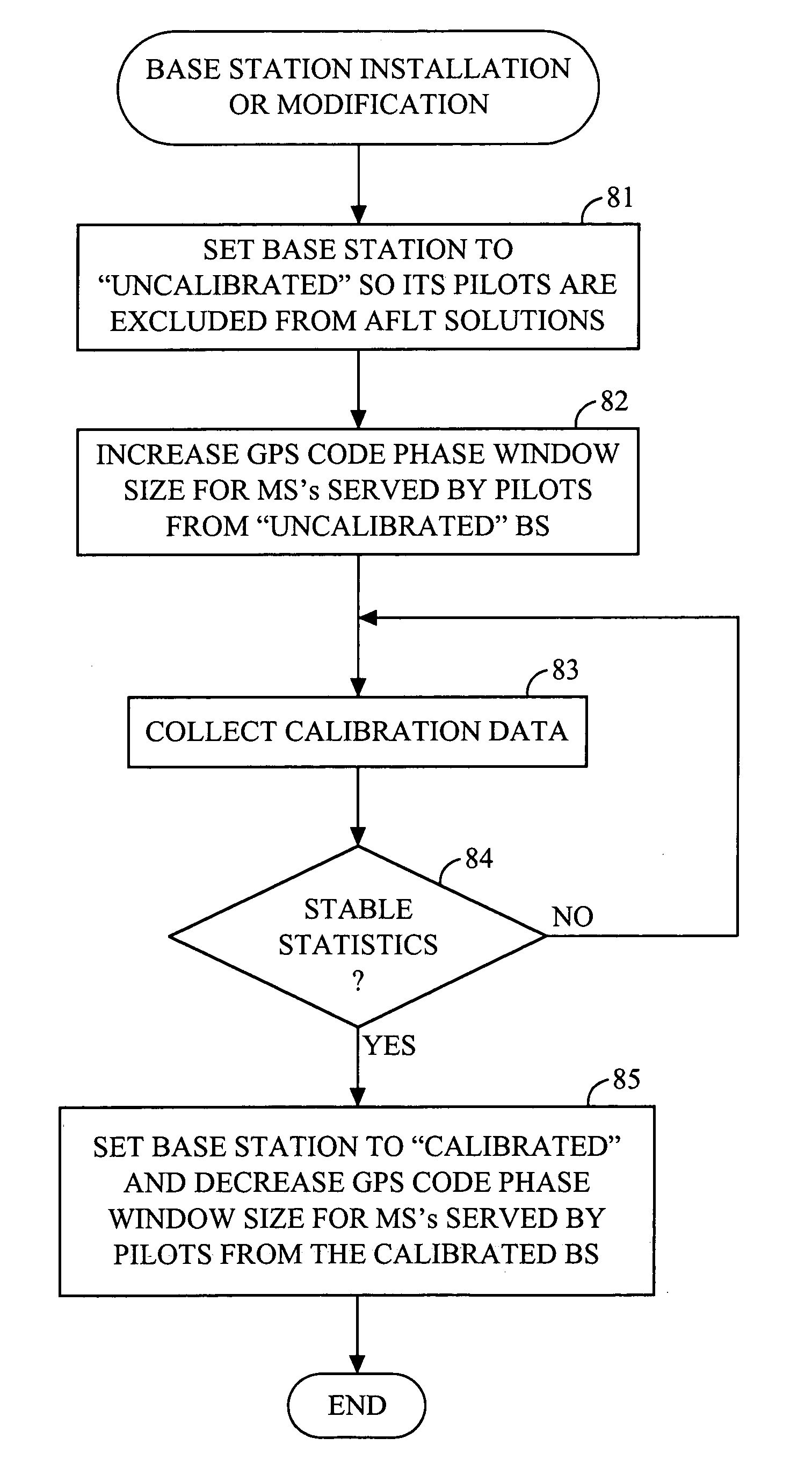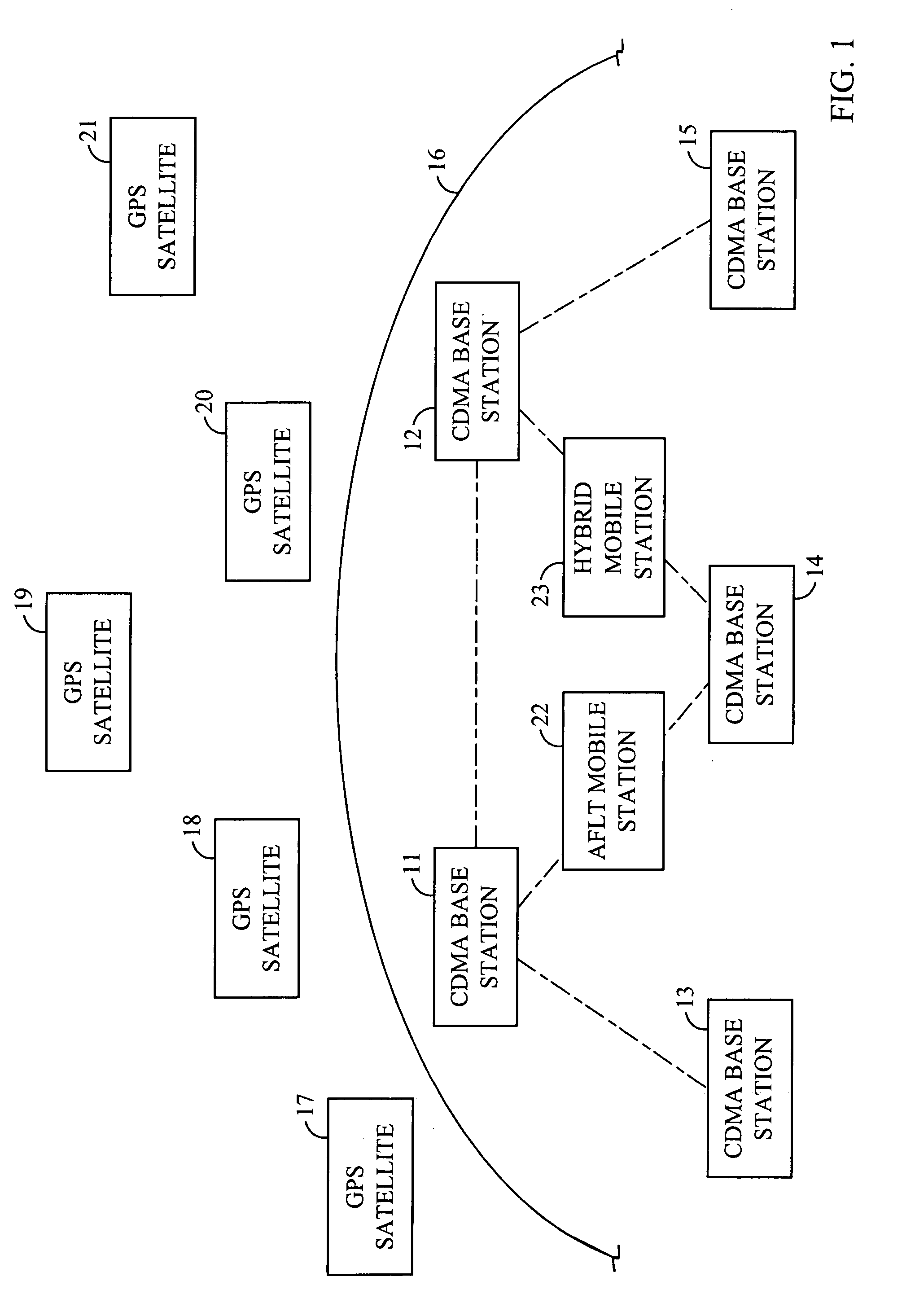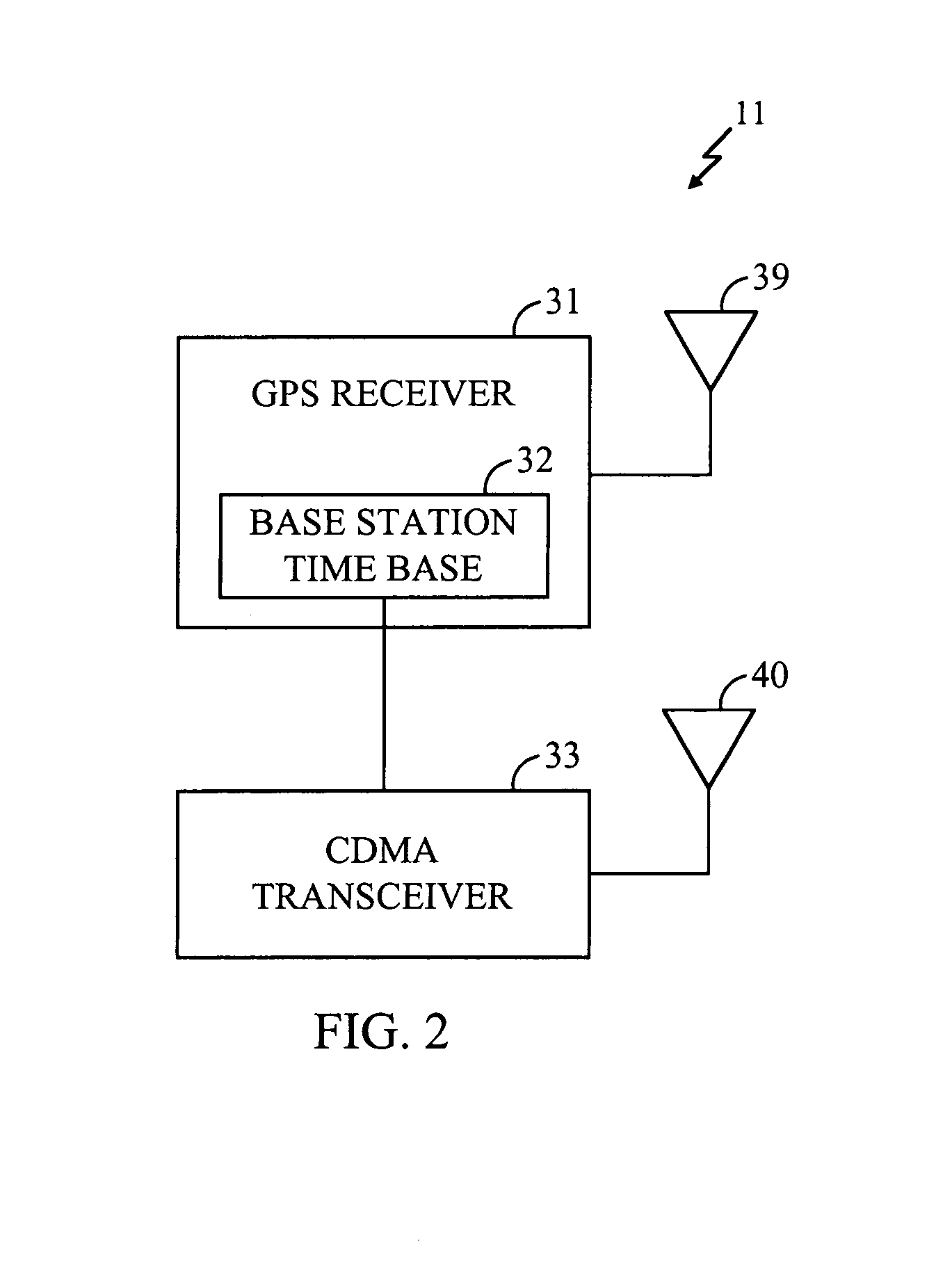Base station time calibration using position measurement data sent by mobile stations during regular position location sessions
a technology of position measurement and base station time, which is applied in the field of mobile communications, can solve the problems of difficult to maintain the overall synchronization of gps time across the network of base stations, and represent a costly process
- Summary
- Abstract
- Description
- Claims
- Application Information
AI Technical Summary
Benefits of technology
Problems solved by technology
Method used
Image
Examples
Embodiment Construction
[0015]Other objects and advantages of the invention will become apparent upon reading the following detailed description with reference to the accompanying drawings, in which:
[0016]FIG. 1 shows a cellular telephone network using the GPS system for locating mobile telephone units and calibrating base stations in accordance with the present invention;
[0017]FIG. 2 is a block diagram of a base station in the cellular telephone network of FIG. 1;
[0018]FIG. 3 is a block diagram of stationary components of the cellular telephone network of FIG. 1, including a position determining entity;
[0019]FIGS. 4 to 7 together comprise a flowchart of a procedure executed by the position determining entity for calibrating the time base of a base station using a mobile station having a hybrid (GPS and AFLT) position determining capability; and
[0020]FIG. 8 is a flowchart of a procedure executed by the position determining entity for management of the calibration of a base station after the base station is...
PUM
 Login to View More
Login to View More Abstract
Description
Claims
Application Information
 Login to View More
Login to View More - R&D
- Intellectual Property
- Life Sciences
- Materials
- Tech Scout
- Unparalleled Data Quality
- Higher Quality Content
- 60% Fewer Hallucinations
Browse by: Latest US Patents, China's latest patents, Technical Efficacy Thesaurus, Application Domain, Technology Topic, Popular Technical Reports.
© 2025 PatSnap. All rights reserved.Legal|Privacy policy|Modern Slavery Act Transparency Statement|Sitemap|About US| Contact US: help@patsnap.com



